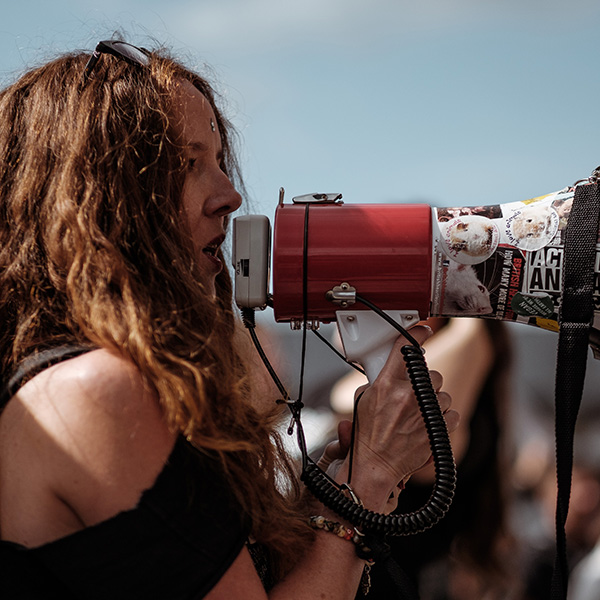
Hang-Yee Chan 陳恆義
I employ data analytics to examine how information spread in the society, and uncover the link between brain, behavior and market.

I employ data analytics to examine how information spread in the society, and uncover the link between brain, behavior and market.

What drives the liking of video advertisements? We analyzed neural signals during ad exposure from three functional magnetic resonance imaging (fMRI) datasets (113 participants from two countries watching 85 video ads) with automated meta-analytic decoding (Neurosynth). These brain-based measures of psychological processes – ranging from perception and language (information processing), executive function and memory (cognitive functions), and social cognition and emotion (social-affective response) – predicted subsequent self-report ad liking, with emotion and memory being the earliest predictors after the first 3 seconds. Over the span of ad exposure, while the predictiveness of emotion peaked early and fell, that of social cognition had a peak-and-stable pattern, followed by a late peak of predictiveness in perception and executive function. At the aggregate level, neural signals – especially those associated with social-affective response – improved the prediction of out-of-sample ad liking, compared to traditional anatomically-based neuroimaging analysis and self-report liking. Finally, early-onset social-affective response predicted population ad liking in a behavioral replication. Overall, this study helps delineate the psychological mechanisms underlying ad processing and ad liking, and proposes a novel neuroscience-based approach for generating psychological insights and improving out-of-sample predictions.
Main collaborators: Maarten Boksem (RSM), Ale Smidts (RSM), Vinod Venkatraman (Temple)
Output: JMR paper

Social influence is a strong driver of behavior, which has been demonstrated again in recent work on persuasion during the COVID-19 pandemic. Recent and highly publicized controversies have highlighted how difficult it is to purposefully influence others who hold opposing opinions about polarized issues like COVID-19 vaccination. During the rollout of the national COVID-19 vaccination campaign, we asked participants who held pro-COVID-19 vaccination attitudes to watch TikTok video clips expressing pro-COVID-19 vaccination viewpoints while undergoing functional magnetic resonance imaging (fMRI), and rated their intention to share these clips with specific others on social media: everyone with access to their social media feed (broadcasting), a vaccine-hesitant friend (counter-attitudinal narrowcasting) or a vaccine-enthusiastic friend (pro-attitudinal narrowcasting). Preliminary results suggest that when it comes to sharing with people who disagree with us, similar behavioral responses may be the result of different neural and psychological processes.
Main collaborators: Christin Scholz (UvA)
Output: Presentation at Annual International Communication Association Conference (2022)

Information transmission in a society depends on individuals’ intention to share or not. Yet, little is known about whether being the gatekeeper shapes the brain’s processing of incoming information. Here, we examine how thinking about sharing affects neural encoding of information, and whether this effect is moderated by the person’s real-life social network position. In an functional magnetic resonance imaging study, participants rated abstracts of news articles on how much they wanted to read for themselves (read) or—as information gatekeepers—to share with a specific other (narrowcast) or to post on their social media feed (broadcast). In all conditions, consistent spatial blood oxygen level-dependent patterns associated with news articles were observed across participants in brain regions involved in perceptual and language processing as well as higher-order processes. However, when thinking about sharing, encoding consistency decreased in higher-order processing areas (e.g., default mode network), suggesting that the gatekeeper role involves more individualized processing in the brain, that is, person- and context-specific. Moreover, participants whose social networks had high ego-betweenness centrality (i.e., more likely to be information gatekeeper in real life) showed more individualized encoding when thinking about broadcasting. This study reveals how gatekeeping shapes our brain’s processing of incoming information.
Main collaborators: Christin Scholz (UvA), Emily Falk (UPenn), Matthew O'Donnell (UPenn), Elisa Baek (USC)
Output: Cerebral Cortex paper

Communicating a brand's image clearly and effectively to consumers is crucial for building brand equity. While these marketing efforts aim at reinforcing the associations between the brand and its desired user and usage imagery, how strongly and consistently these associations are forged in consumers’ minds — and thus how effective such advertising is — is difficult to quantify and measure with self-report instruments. In this project, we compare consumers’ brain responses during passive viewing of visual templates (photos depicting various social scenarios) and brain responses during active visualizing of a brand's image, and then they generate individual neural profiles of brand image that correlate with the participant's own self-report perception of those consumer brands. In aggregate, these neural profiles of brand image are associated with perceived cobranding suitability and reflect brand image strength rated by a separate and bigger sample of consumers. This neural profiling approach offers a customizable tool for inspecting and comparing brand-specific mental associations, both across brands and across consumers. It also demonstrates the potential of using pattern analysis of neuroimaging data to study multisensory, nonverbal consumer knowledge and experience.
Main collaborators: Ale Smidts (RSM), Maarten Boksem (RSM)
Output: JMR paper
summa cum laude